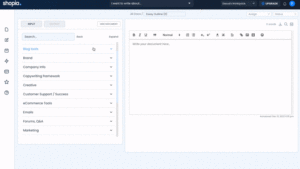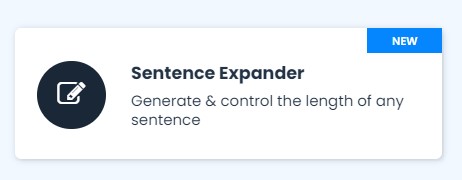Image credits: Andrea Piacquadio
When starting an ecommerce business, it’s important to have a clear understanding of your target customer. This means creating a customer profile that outlines your average customer’s age, gender, income, and interests. Once you have a clear understanding of your target customer, you can better cater your marketing and product offerings to appeal to them.
Creating a customer profile for your ecommerce store can be eye-opening. It can help you better understand who your target customer is, what their needs and wants are, and how to reach them. When putting together your customer profile, it’s important to be as specific as possible.
One way to get started is to think about your average customer.
What To Include In A Customer Profile
If you’re running an ecommerce store, it’s important to have a clear understanding of your target customer. This means creating a customer profile that outlines your average customer’s age, gender, income, and interests.
Once you have a clear understanding of your target customer, you can better cater your marketing and product offerings to appeal to them. So what should you include in your customer profile?
Age
Generally, different age groups respond to different marketing tactics. For example, millennials are more likely to respond to social media marketing, while baby boomers are more likely to respond to email marketing.
Gender
Women are more likely to make purchases online than men, so it’s important to cater your marketing to female customers.
Income
Your target customer’s income level will impact the types of products they’re likely to purchase. For example, a high-income customer is more likely to purchase luxury items, while a low-income customer is more likely to purchase practical items.
Interests
It’s important to understand your target customer’s interests so you can create content that appeals to them. For example, if your target customer is a fitness enthusiast, you could create content about the latest fitness trends.
Defining Your Target Audience
An ecommerce business must have a clear understanding of its target customer. This means creating a profile of the average customer’s age, gender, income, and interests. Once you have a clear understanding of your target customer, you can better cater your marketing and product offerings to appeal to them.
Creating a customer profile is essential for any business, but it’s especially important for ecommerce stores. By understanding who your target customer is, you can design your website and marketing materials to appeal to them. You can also create product offerings that are likely to interest them.
If you’re not sure how to create a customer profile, there are a number of online resources that can help.
Determining What Products To Sell
When starting a business, one of the most important decisions you’ll make is what products or services to offer. Determining what products to sell can be a daunting task, but if you take the time to do some research and think about your target customer, you’ll be able to make a more informed decision.
One of the best ways to determine what products to sell is to think about what you’re good at and what you enjoy doing. If you have a lot of knowledge about a particular topic, or if you’re passionate about a certain activity, you may want to consider selling products or services related to that topic.
Another thing to consider when deciding what products to sell is your target customer. Who is your ideal customer? What are their needs and wants? What do they already buy? If you can answer these questions, you’ll be in a better position to sell products that appeal to your target customer.
Creating A Buying Experience That Delights Your Customers
There’s no doubt that having delighted customers is key to a successful ecommerce store. After all, happy customers are more likely to return, refer others, and leave positive reviews. So how can you create a buying experience that delights your customers?
Here are a few tips:
– Make sure your website is easy to navigate.
– Offer a wide variety of payment options.
– Ship orders quickly and efficiently.
– Respond to customer inquiries promptly.
– Offer customer service that goes above and beyond.
By following these tips, you can create a buying experience that will keep your customers coming back for more.
What To Do If You Have Multiple Customers
If you’re running an ecommerce store, it’s important to have a clear understanding of your target customer. This means creating a customer profile that outlines your average customer’s age, gender, income, and interests. Once you have a clear understanding of your target customer, you can better cater your marketing and product offerings to appeal to them.
However, it’s important to note that not all customers are the same, and you may have customers who fall outside of your target customer profile. In these cases, it’s important to treat each customer individually and find out what it is that they’re looking for.
If you have multiple customers who fall outside of your target customer profile, it may be worth revisiting your target customer profile to ensure that it’s still accurate.
Using The Customer Profile To Improve Your Ecommerce Store
Creating a customer profile is an important step in improving your ecommerce store. By understanding your average customer’s age, gender, income, and interests, you can better cater your marketing and product offerings to appeal to them. This can help you increase sales and improve customer loyalty.
There are a number of ways to create a customer profile. One popular method is to use data from your customer database. You can also survey your customers or use data from social media.
Once you have your customer profile, it’s important to use it to drive your marketing and product decisions. For example, if your customer profile indicates that your target customer is a young woman with a high income, you may want to focus your marketing efforts on Pinterest, where women are more likely to be active. You may also want to offer products that are within your customer’s budget and appeal to her interests.
Collecting Customer Data
Collecting customer data is an important part of any ecommerce business. By understanding your target customer, you can create marketing and product offerings that appeal to them. In addition, collecting customer data can help you better understand your customers’ needs and preferences, which can help you improve your business. There are a number of ways to collect customer data, including surveys, customer feedback, and data analytics. It’s important to use all of the data you collect to get a clear understanding of your customers.
Measuring The Success Of Your Customer Profile
One of the most important steps in creating a customer profile is measuring the success of it. This involves tracking how well your marketing and product offerings are resonating with your target customer. You can do this by analyzing your website’s traffic, conversion rates, and customer feedback.
If you find that your target customer is not responding well to your marketing and product offerings, you may need to rethink your customer profile. It’s important to constantly tweak and update your customer profile to ensure that you are targeting the right audience.









